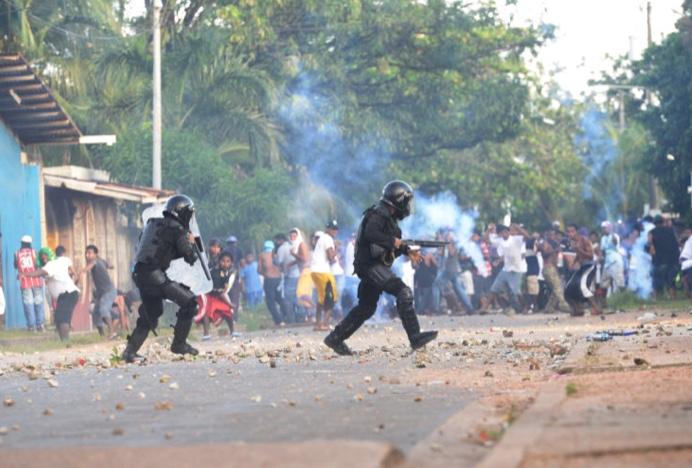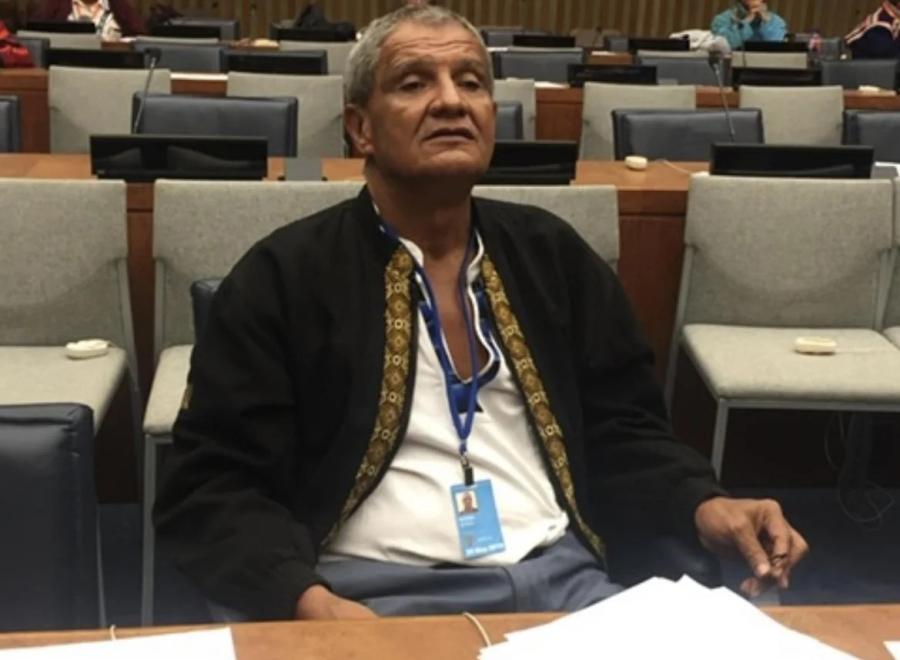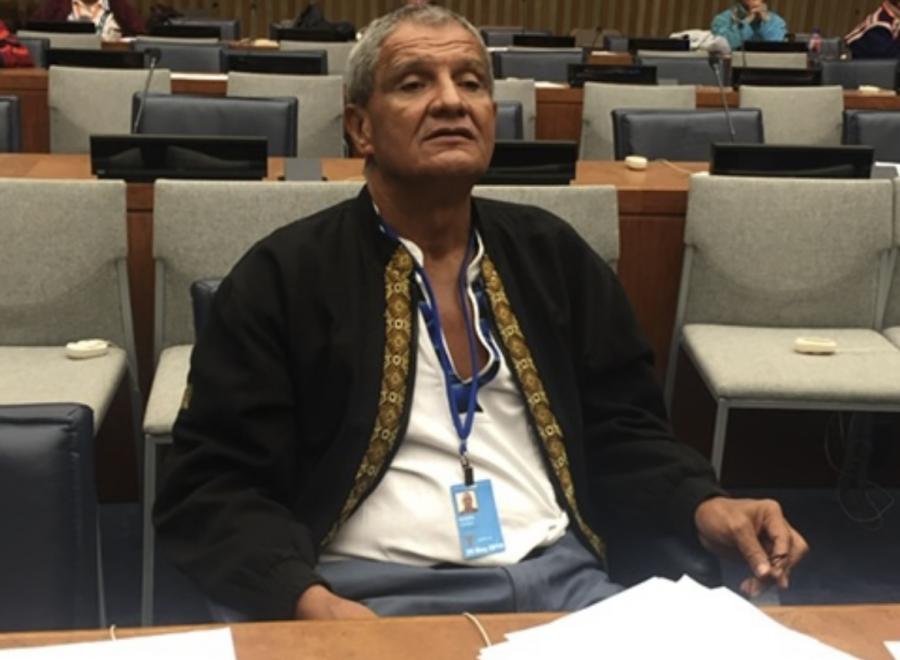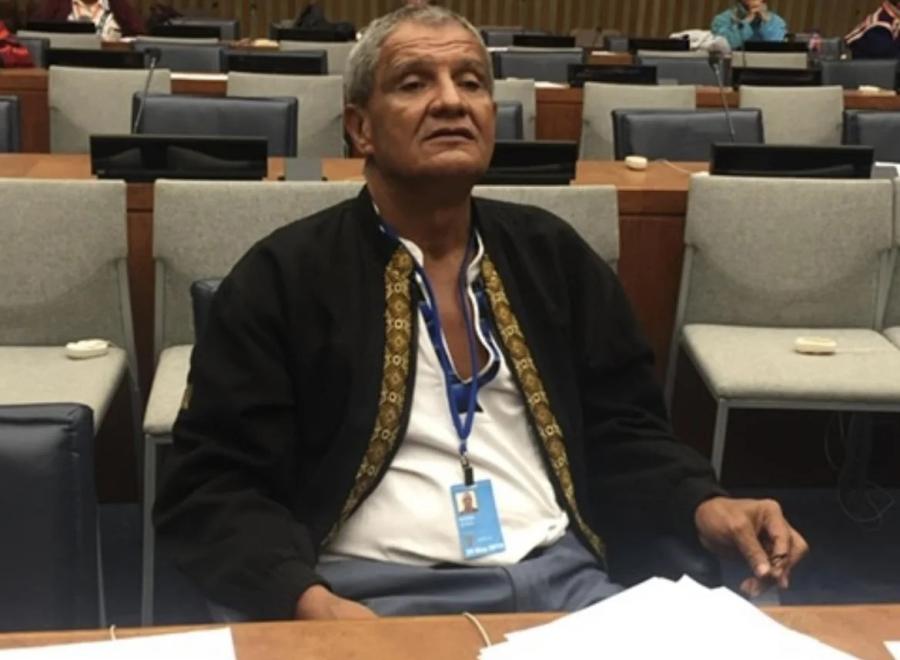
By Laura Hobson Herlihy
“Yatama should have never broken their alliance with the Sandinistas...the Sandinistas are going to be in power for many more years.” Salvador Fermin Chow, a Miskitu elder and religious leader.
The Sandinistas symbolically massacred the Indigenous Miskitu people along the Caribbean Coast in the Nicaraguan municipal elections. The Nicaraguan state first conquered and incorporated the Caribbean Coast in 1894. Local intellectuals claim the recent elections on November 5, 2017 represent the Nicaraguan state’s final conquest and domination of the Miskitu people and their resource-rich, rainforest homeland along the Caribbean Coast.
The ruling National Liberation Sandinista Front (FSLN) state party was expected to win big throughout Nicaragua in the recent elections, which they did. The FSLN won 135 of 153 mayoral posts, amidst accusations of unprecedented voter abstention (70-80%), electoral fraud and post-electoral violence. Seven citizens reportedly were killed, dozens jailed, and hundreds injured in the 24 hours following the election.

Monsignor Silvio José Báez, the Auxiliary Bishop to the Catholic Archdiocese of Managua, had announced prior to the election that he would abstain from voting, due to “a flawed electoral system with the well-documented history of electoral fraud and officials that do not provide confidence to the people. A common expression heard throughout Nicaragua is, “Why vote when you already know who’s going to win?” One week after the 2017 municipal elections in La Cruz de Río Grande (RACCS), the Nicaraguan military killed with impunity six more citizens—mainly young men, two under the age of 18--in an opposition region filled with former Contras, rumored to be re-arming. The Nicaraguan Bishops Episcopal Conference declared that “violence now occurring was the result of a broken electoral system.”
The Caribbean Coast was a highly-contested and politically-divided region in the Nicaraguan municipal elections. Here, the FSLN’s main opposition party is Yatama (Yapti Tasba Masraka Nanih Aslatakanka/Children of the Mother Earth), the largest and only grassroots Indigenous and Afro-descendant organization on the Caribbean Coast. Founded in 1987, Yatama became a political party in 1990. The majority of Yatama’s supporters identify as Miskitu, but Indigenous Mayangna, Ulwa and Rama, Afro-Indigenous Garifuna; Afro-descendant Kriuls, and Native mestizos fill out its membership.
Politics of the Autonomous Regions
Many members of Yatama fought as former Contras, or counter-revolutionaries, in the US-backed war within the victorious Sandinista revolution (1979-1990). The Caribbean Contras represented about one-fourth of the total Nicaraguan Contra forces, but were the only successful force. Due mainly to Contra resistance, the Sandinista state passed the Autonomy Law (law 28) in 1987, awarding two autonomous regions to the Indigenous and Afro-descendant peoples. The North and South Caribbean Coast Autonomous Regions (the RACCN and the RACCS) each had their own legislative bodies, becoming a model for pluri-ethnic, politically autonomous regions throughout Latin America.
Academics and activists now concur that Caribbean Coast autonomy exists on paper only, and that the fatal flaw of the autonomy project was that it provided for the region’s continued involvement with national political parties. This meant that invading mestizo land colonists, who illegally settle and cut down rain-forest lands and vote FSLN, would eventually outnumber the Indigenous and allied Afro-descendant peoples; losing elections, then, could mean a de facto loss of political autonomy. This fait accompli was speeded up during the last few electoral processes.

In the 2014 regional elections, the FSLN national party won, taking control of the RACCN and RACCS governments away from Yatama. The day after elections in Bilwi, the RACCN capital, Yatama women protested election results and occupied the regional government building; street skirmishes broke out between Yatama and FSLN youth gangs. Yatama officials then formerly broke their alliance (2006-2014) with the FSLN and accused the FSLN of both electoral fraud and non-completion of saneamiento, a movement to remove colonists and outside industries from Indigenous and Afro-descendant territories, as called for by Nicaraguan Law 445, the communal property law.
Yatama increased its membership after breaking their alliance with the FSLN. New members joined Yatama to protest the invasion of Indigenous and Afro-descendant territories by agricultural and cattle-ranching colonists from the Nicaraguan interior and Pacific; and the Sandinista state’s refusal to complete saneamiento. Beginning in 2014, violence erupted in Wangki-Twi Tasba Raya (RACCN) between mestizo colonists and Miskitu resident-activists. Colonists, armed with automatic weapons fought with Miskitu men, wielding machetes, harpoons and shot-guns. Over 100 Miskitu have been killed, kidnapped or injured and in 2015-2016, 3,000 refugees fled to Honduras, with no protection or support from the Nicaraguan government.
Yatama made new alliances with Creole, Garifuna, Ulwa, and Rama peoples in the RACCS, and gained support in nearby Corn Island, where the Miskitu population is growing. These new activists protest Nicaraguan Law 840, the Canal Law, and the Chinese-backed (HKND) inter-oceanic canal, set to cut through Rama and Kriol lands. Indeed, the Rama-Kriol Indigenous Territorial Government (GTI) in 2014 and again, in 2015 successfully put forth human rights claims against the Nicaragua state to the OAS’s Inter-American Commission on Human Rights (IACHR).
In the 2016 Nicaraguan General Elections, a dramatic election took place on the Caribbean Coast. Brooklyn Rivera, the long-term Miskitu leader and director of Yatama, won back his legislator seat in the National Assembly. The vote showed that his people still supported him after the Sandinista-controlled National Assembly in 2015, had criminalized Rivera and illegally ousted him from the assembly, where he had served as a legislator since 2007.
Following the General Elections, the FSLN-allied Supreme Electoral Council (CSE) delayed in posting results, causing suspicion in the opposition parties. The CSE then announced that the FSLN would control 71 of the 92 legislator seats in the National Assembly; and that, of the five assemblymen seats (diputados) on the Caribbean Coast, the FSLN had won three and that Yatama and the PLC (Constitutionalist Liberal Party) had each won one a-piece—only Rivera was elected for Yatama. Yatama denounced the electoral fraud, arguing that they had won more seats based on the system of proportional representation.
Yatama held a protest march in Bilwi that began peacefully. Protesters then were met by Sandinista youth gangs, Riot Police sent in from Managua and Bilwi’s National Police force, who attacked with rocks, tear gas, and rubber bullets. Yatama youth fought back in retaliation, rand-sacking the regional government buildings and looting local stores.
Given the history of violence that occurred in the last two elections (2014 and 2016), Bilwi residents feared another tumultuous show-down between the FSLN and the Indigenous Yatama party during the 2017 municipal elections. Hundreds of Riot Control Police from Managua militarized Bilwi and other coastal towns prior to election day on Nov. 5th. The FSLN justified the militarization of Bilwi, and other municipal centers, as an attempt to protect its citizens from Yatama’s violent protests. Rivera answered, “Who are the violent ones? They steal lands and elections and kill our people. When we fight back and try to defend ourselves and our rights, they call us violent.”
Election Day Violence
Yatama’s campaign finale march reportedly occupied more than ten city blocks. The march intended to show FSLN supporters that Yatama had an obvious majority and planned to win Bilwi. Yatama leadership anticipated the FSLN would attempt to steal the elections. They prepared their supporters to document and denounce every voter anomaly they witnessed.
Throughout election day in Bilwi, Yatama members posted on social media, pictures and descriptions of electoral anomalies. Voting centers closed at 6:00 pm. Yatama leaders still occupied the Marvin Michel voting precinct, demanding their supporters be allowed to vote, after a reported 800 had been illegally turned away.
Shortly after 10:00 pm, the Sandinistas claimed victory in the municipality of Bilwi and celebrate through the streets. Yatama leaders simultaneously claimed victory on the radio and argued that ballot boxes from their loyal communities in the Sandy Bay district had not yet arrived nor been counted. News of violence in other RAACS and RACCN municipalities is reported, including the murder of a Miskitu Yatama man in Sandy Bay Sirpe (RACCS). It became clear…the FSLN intended to sweep the last four Yatama-held municipalities in the autonomous regions.

The following day, Yatama refused to accept the results reported by the CSE, who claimed the FSLN had won 12, and the PLC had won four of the 16 municipalities in the autonomous regions (RACCN and RACCS). According to the CSE, Yatama did not win any municipalities, despite Yatama officials claiming to have won their formerly controlled municipalities of Bilwi, Waspam, and Prinzapolka in RACCN and Desembocadura de Río Grande in the RACCS.
Yatama officials denounced the FSLN for lack of transparency in the elections, claiming FSLN precinct supervisors alone controlled and had access to the ballots, giving them the opportunity to withhold, replace and destroy ballots. Additionally, Yatama leaders claimed 3,000 of their supporters were not allowed to vote. Yatama defiantly accused the FSLN of electoral fraud and voter suppression and alleged the following voter anomalies:
● withholding voter identification cards to Yatama sympathizers
● intimidation and harassment of Yatama supporters at voting precincts
● the manipulation of voter data (sending voter’s names to far-away municipalities)
● using state vehicles to transport FSLN supporters
● multiple voting by FSLN sympathizers (using removable ink on their thumbs)
● the purchasing of votes by the FSLN
● allowing the FSLN-backed land colonists and Riot Police to vote in local elections,although not legal residents
● setting up parallel headquarters and computer systems to tally votes
Yatama held a protest march on the afternoon of November 6. Yatama sympathizers reportedly engaged in violence after being confronted by Sandinista youth gangs, backed by the Riot Police brought in from Managua and the Bilwi Police force. Both Yatama and Sandinista youth gangs, and a-political, rogue neighborhood gangs, caused destruction to personal and public property, such as the looting of the Claro smart-phone distribution center and burning of buildings.
Armed para-military forces arrived at the Yatama house to detain Yatama leaders Brooklyn Rivera and Elizabeth Henríquez, who both escaped after Yatama youth fought their captors. Yatama headquarters, a sacred temple of Indigenous identity, and its community radio station Yapti Tasba Bila Baikra (Voice of Mother Earth), known for broadcasting in the Miskitu language, were set afire and burned. Yatama leaders caught in the fire reported that Riot Police sent from Ortega’s central government, accompanied by Sandinista youth and the Bilwi Police, were responsible.
Perhaps most symbolically, the iconic statue of the Indian (“El Indio”) was demolished in Bilwi’s town center. Yatama leaders accused Sandinista youth, protected by the Police, of committing this racist, hate crime. The statue, erected decades ago, represented the Indigenous struggle and resistance on the coast.
By the morning of November 7, the red and black FSLN flag had been mounted high upon the surviving radio tower, replacing Yatama’s forest-green flag. The Bilwi Police then began arresting Yatama members involved in the destruction of property and violence, but turned a blind eye to the destruction caused by Sandinista youth and rogue gang-members. All total, two Miskitu Yatama men were shot dead, forty were injured and over 90 Yatama members were arrested and held in the Bilwi jail.
Yatama not only lost the recent municipal elections to the increasingly authoritarian Sandinista regime, but their members also experienced the following human and Indigenous rights violations:
● military occupation
● criminalization and detainment of their leaders
● arbitrary repression and imprisonment of more than 90 of their sympathizers
● the burning of their Indigenous community radio station--Yapta Tasba--that broadcasts in the Miskitu language
● the burning of the Yatama meeting house, a sacred Indigenous temple
● the destruction of a civic monument, the Indian statue that represented the Indigenous
struggle that stood in the town’s center for nearly 30 years
● the suppression of the Indigenous Yatama flag by the state’s FSLN flag
On November 7, the Riot Police launched tear-gas into the domestic compound of Brooklyn Rivera, preempting this 65 year-old’s second escape in the last 24 hours. One thing is clear to Rivera, as he remarked by phone on November 8, “The FSLN state is too strong and strategically smart to overcome…There is no reason for Yatama to continue participating in elections unless the electoral system is reformed. Free elections do not exist in Nicaragua.” Rivera now fears for his life, while trying to decide the future of Yatama. Will Yatama remain a political party or return to its pre-1990 roots as an Indigenous organization?
The Ortega-Murillo Dynasty, the Nica Act and the OAS
The Sandinista revolutionaries in 1979 valiantly ousted the US-backed Somoza dynasty (1930-1979), and the FSLN guerilla leader Daniel Ortega served as President from 1984-90. Ortega returned to power in 2006 and has remained President for three consecutive terms. The FSLN-dominated National Assembly changed the Nicaraguan constitution, abolishing presidential term limits in 2014; and used the FSLN-controlled Supreme Court to eradicate Eduardo Montealegre of the Independent Liberal Party (PLI), the only real opposition presidential candidate in the 2016 general elections.
President Ortega, along with his wife and first-time Vice-Presidential running mate, Rosarillo Murillo, won the 2016 general election. Many predict the emerging Ortega-Murillo dynasty will continue for decades to come, as Daniel and Rosario have more than a half-dozen children and the family does not plan to relinquish power. Many of the original Sandinistas of the 1980s perceive the Ortega-Murillo dynasty as highjacking ‘Sandinismo’ and replacing it with the ideology of ‘Danielismo.’
The US House of Representatives unanimously approved The Nica Act (Nicaraguan Investment Conditionality Act), now moving toward the Senate, to restrict loans to Ortega’s government by multilateral organizations (such as the Inter-American Development Bank, the IMF, and the World Bank). These actions were taken due to the country’s loss of the democratic process and electoral transparency. A new version of the Nica Act called for electoral observation in the 2017 municipal elections, as the US State Department had previously reported human rights violations in the 2016 general election in Nicaragua, and the lack of international electoral observers.
The Organization of American States (OAS) collaborated with the Ortega government to monitor the recent municipal elections but did not engage in negotiations concerning the strengthening of Nicaragua’s democratic institutions. Supporters of the Nica Act opposed the OAS presence, accusing the OAS of being complicit in fraudulent elections. As predicted by Nica Act supporters, the OAS publicly stood behind the legitimacy of the Nicaraguan elections, while the Nicaraguan press and human rights organizations in Costa Rica and Nicaragua denounced the FSLN for fraudulent elections, violence and human rights violations throughout Nicaragua.

Unanswered Questions
Ethnic and national identities collide and overlap in Nicaragua. Does being Miskitu mean being Yatama? Does being Nicaraguan mean being Sandinista? What about those who identify as Miskitu-Sandinistas? Muskitia is the poorest region within the second poorest country in the Americas, following Haiti. Miskitu people encounter many more employment opportunities, which they need to feed their families, if they register with the Sandinista regime. As such, many Miskitu-Sandinistas now embrace Managua’s modernist discourse of development and economic prosperity, but harbor deep Yatama affinities.
Many Miskitu-Sandinistas, like the rest of the country’s citizens, acquiesce to the FSLN for two main reasons: they see the FSLN dictatorship as an inevitable, irreversible force; and secondly, they want to avoid revolution and war at all cost: they lived through the violent 1980’s and still have unhealed wounds. Taking advantage of the coastal people’s conflict-avoidance mentality, the FSLN has successfully divided and thus, conquered the coastal peoples. Following the municipal elections, the future of the Yatama political party and perhaps, the larger autonomy process, is at stake.
Increasingly frustrated, and with their backs up against the wall, many Yatama sympathizers dream of returning to their glory days as Contra warriors--they long to re-arm to fight the state. Unlike the 1980s, however, Yatama does not have US or other international backing. As Rivera explained, “We can’t fight, we have only rocks and they have automatic weapons.” Rivera is well-aware that Nicaragua has the most sophisticated military in Central America; and that United States international politics is now focused far beyond its southern neighbors, on the Middle East and East Asia.

A Statement by Brooklyn Rivera
We were projected to win four municipalities and we won these -- Bilwi, Waspam, and Prinzapolka, and Desembocadura de Río Grande. Yatama does not recognize the results reported by the CSE. We accuse the Sandinista state government of stealing the elections.
The National Police continue to persecute leaders and members of the Yatama organization that denounce the electoral fraud that occurred in the municipal elections on the Nicaraguan Caribbean Coast. Protests took place after the elections this past Nov. 5th, and still in jail are 52 activist members of Yatama in Bluefields, Corn Island and Bilwi. And they [the Police] continue capturing more people, inventing crimes of robbery and looting.
On our part, we’ve been victims of violence and we continue suffering abuses at the hands of the para-military riot police that have been sent from Managua, who are capturing our people, the youth more than any. What is strange is that the FSLN has ordered to burn our offices…our radio station…they’ve killed two or more of our compañeros and many more are wounded, and none of the other guys are in prison. Only the victims are the ones incarcerated. We will denounce this before the OAS’s IACHR and Amnesty International.
The repression continues of Indigenous activist members of our Yatama organization. We’re busy providing humanitarian effort to help the mothers, children, and wives of our activists, who are being intimidated, incarcerated and persecuted by the government of President Ortega.



